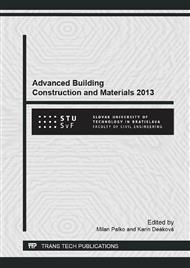p.39
p.43
p.47
p.52
p.57
p.62
p.67
p.71
p.77
Influence of Facade Colour on Yearly Energy Need
Abstract:
Energy prices are constantly rising and that ́s why people are always looking for new ways to reduce energy costs. The main trend is to eliminate heat losses to the maximum extent. The demands for more sophisticated outer insulation for building still envelope (roofs, floors, walls, doors, and windows) are growing. Increased demands are evident also in the standards used in this area. Buildings with nearly zero energy (nZEB) become not only a vision but reality. Several ways for reduction of the energy needs are offered. The application of various colour adjustments of the building facade is one of the options. The impact of colour on the demand for heating and cooling at different thermal insulation capability is analyzed from the thermo - technical point of view. However, the question is whether it is possible to influence the annual costs for heating and cooling through the selection of facade colour (respectively through the absorption of solar radiation). We can say that today's architecture tries to use the structure of the building as some kind of thermal radiation (or rather solar energy) accumulator. In such a way we can characterize the majority of the structural designs for energy low cost buildings, where the main aim of such a solution is to reduce the energy need for heating and cooling.
Info:
Periodical:
Pages:
57-61
Citation:
Online since:
December 2013
Authors:
Price:
Сopyright:
© 2014 Trans Tech Publications Ltd. All Rights Reserved
Share:
Citation:


